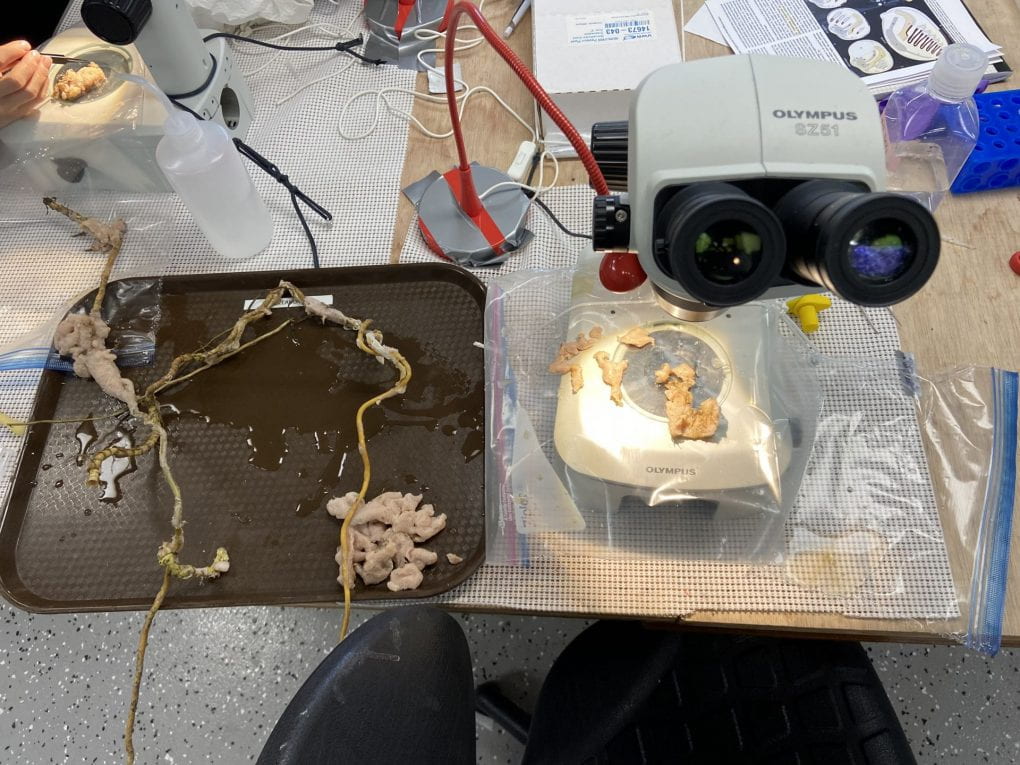June 15th, 2021
We started early today, with Jason diving down around midnight. The dive began similar to our past ones, starting with science objectives. We had our usual deployments and recoveries of tube traps, tilt meters, and sipuncollector. After completing those objectives, we moved on to collecting our mussels. At these mussel patches you could see oil droplets floating through the water like small little pearls occasionally. At these cold seep sites, along with methane, natural oil flows into the overlying water. Around 3am, the scientists had the opportunity to interact with some deep-sea wildlife. While traveling across the seafloor, the Jason watch team came across a giant isopod, of the Bathynomus genus. Jason slowly approached the bug and extended an arm. Here’s a short video of the isopod running off, it wasn’t interested in hanging around with us.
Here’s a video that Avery Calhoun put together on the last cruise highlighting the Bush Hill site:
Once Jason resurfaced around 8am, we had the chance for discovery. During the dive we came across some tubeworms that were covered in white sponges. Dr. Young mentioned an interest in a species of worm that lives on the sponges that live on the tubeworms. The deep-sea seems to have many of these worm-sandwich epibiotic relationships, just like the sabellids on the Acesta on the tubeworms described earlier. This worm species had been described but didn’t have specimens, however. With the tubeworms in our bioboxes, the team was tasked with searching the sponges for these elusive worms. We whisked them away to the microscope table where we removed the sponge and began searching. Dr. Young described them as the same color as the sponge, so we had to search for distinctive textures and worm-like shapes. Confused eyes turned into a big surprise as the two Western REU students, Fiona McBride and Liam Patrick found a few of them! These individuals are going to be preserved and used for further study, potentially they could end up in a museum! They may not be the most charismatic creatures, but finding a novel species is worth the excitement. This is why deep-sea research is so fascinating, these places haven’t been studied extensively and new discoveries are common. Even while searching through these sponges we found some bathymodiolin mussel larvae, which was not expected. Finding them on the sponges indicates the larvae can swim at least as high as the tubeworms, aiding in answering our research questions about larval dispersal.


The Bathymodiolus excitement continued later into the night by finding many live larvae while sorting through the slurp samples. The live mussel larvae have a small foot that sticks out and they crawl around with, but also some of these babies were swimming! We are interested in finding these swimming veligers because they haven’t developed their methane-consuming bacteria symbionts yet and can use them for microbiome and morphometric analyses.
With another sunset, we ended the day by beginning or transit to our last site, Mississippi Canyon, which we detoured earlier in the cruise. We can’t believe we’re almost done!

nice post